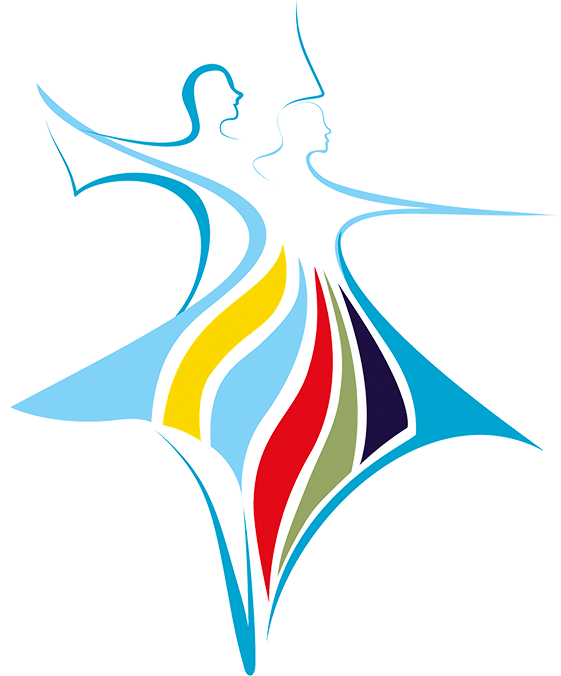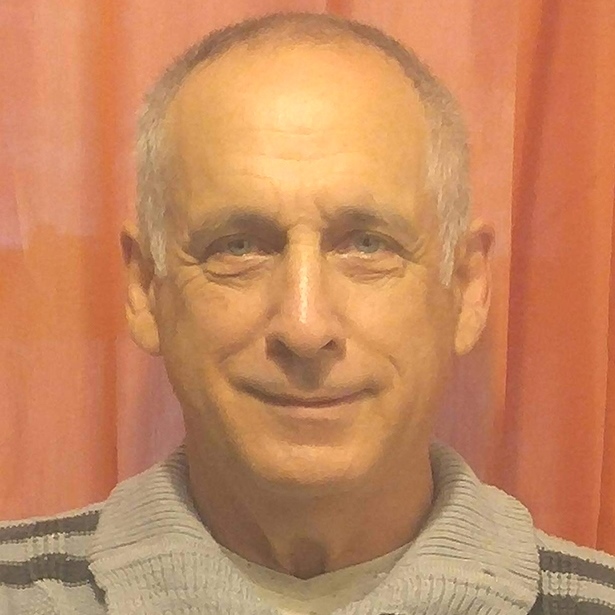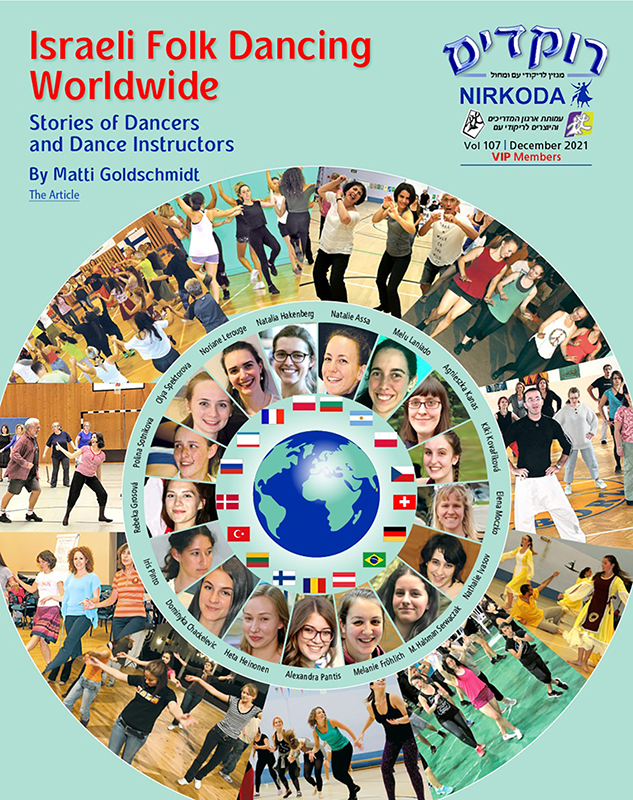- Home
- Rokdim Nirkoda 107
- Today We Dance Recreational Dance And Not Folk Dance
Today We Dance Recreational Dance And Not Folk Dance
Interview with Zvi Hillman (Tacho)
- Translation: Ruth Goodman
Shalom Zvi Hillman
Shalom, Shalom.
You are better known as Tacho and you are connected to the world of folk dance, a very significant connection.
I understand this is a compliment.
Of course … come tell me how you’re connected to the world of folk dance?
It is a story that begins more or less in 1956, when my classmates and I were in high school and youth group members in the Tzofim (Scouts). In our activity sessions we dealt a lot with literature and the history of Zionism because the group included Amos Oz z”l and the madrich (leader) was Boli (A.B. Yehoshua), but we also danced simply, “Ben Loke’ach Bat” and lots of hora.
Not far from the location of the Tzofim’s activities was “Beit Hillel, and after the activities we would run there for folk dancing… It was a new world for us; we were among the youngest kids there and we were mesmerized by this thing called Israeli folk dance…
At that time, there were two institutions of higher education in Jerusalem: the Hebrew University and the Bezalel Academy, and these attracted students from all over the country, including those who came from folk dance “strongholds”, mainly Haifa, the suburbs and Tel Aviv. And so it happened that in Jerusalem there was quite a collection of excellent dance instructors.
Who actually came from all over the country and not particularly from Jerusalem?
There were quite a few Jerusalemites, too. At that time, one of the important instructors was Moshe Eskayo who also formed a performing troupe (lehaka). It was not easy to form a lehaka at that time because dance troupes were usually formed by organizations such as the Histadrut and the municipalities and, believe it or not, even the Mapai party wanted to have its own lehaka. This is how the story of “Lehakat Hora Yerushalayim” (Hora Jerusalem Dance Company), founded by Haim Berenzon began.
So basically, it all started with the “Tzofim”, in an atmosphere that is very connected to the land, to Zionism… through the folk dances and did you feel that you were formulating your own nationalism?
It is difficult to say that at age 16-17 we thought of “nationalism”, although we were already in work camps in kibbutzim, at Ma’ayan Tzvi and Hanita, and there we absorbed the spirit of the kibbutz, the rural culture, if you can call it that. My gar’in (core group) completed Kibbutz Magal of the Scout alumni and was also blessed with the culture of that period.
You said dancing at “Beit Hillel”where they came from all over, how did it develop from there?
Before I enlisted in the army in 1958, Nachal of course, there was a huge dance conference at Kibbutz Dalia and we performed there in a lehaka called “Lehakat HaHistadrut B’Yerushalayim”. A performance which was very successful. Then I saw many performing troupes including those of Yonatan Karmon that were famous. I was really taken by it.
When I enlisted, I thought I would do the usual route, i.e., basic training, preparatory training, settlement, but at the end of the basic training, they pulled me out and sent me to Pikud Ha’Nachal: “You do not go to the gar’in; you will go to Pikud Ha’Nachal and first of all, to a dance course”. What would I do at a dance course? I asked. “There you will learn how to instruct and there is no room for argument.”
That’s how I came with my friends, Dan Biron and Haim Berenzon, to the course headed by Yossi Abuhav z”l, and he was the one who turned us into dance instructors and lovers of folk dance. Dance instructing is not just jumping around and showing the correct steps and being nice. He instilled in us the values of leadership and the ability to influence others to accept us as mentors. It is clear to me that Yossi, of blessed memory, was the man who, in addition to leadership, also enabled many instructors in the country to also understand what folklore is, true folklore, folk knowledge that stems from the roots of Jewish and Zionist tradition. Later on, we learned from famous people in the field: Gurit Kadman, Tamar Alyagor, Yonatan Karmon, Margalit Oved, Rivka Shturman and Eliyahu Gamliel; the entire group on which the folk dance movement was founded.
Tacho, you’re saying that you learned to instruct within the framework of the army…
While I was wondering what I would do within the framework of the army, I was integrated into Tzevet Havai Ha’Nachal. The idea came from Joe Craiden, who was the Nachal’s education officer, according to which people with stage ability were recruited into the framework of Tzevet Havai that went from place to place in the army-controlled settlements, etc., and spread the “pioneering culture” of those days.
Tzevet Havai of the Nachal also dealt with dances – folk dances, with Israeli folk dances and not just songs?
Of course, and not only that; every time that a recruitment cycle ended their basic training, they had to send a pair of soldiers from each gar’in to a dance course. By then I was no longer one of the trainees, but one of the instructors, and again with Yossi Abuhav.
That’s how we spread folk dance throughout the country. Each team consisted of a song and music instructor, a dance instructor, an accordionist and sometimes a decoration expert. At the time, I even established the framework of a performing troupe. For example, at the celebration of the settling of gar’in “Ketziot” to establish Ein Yahav, we were assigned as a team to prepare the celebrations of new settlements. I was very young and it was a very interesting task.
Did knowing that you had the backing of the army framework, the funding and the entire organization, make life easy?
Correct. Preceding us, there were the Nachal Tzevet Havai teams, who were actually artists for all intents and purposes and from them came artists who were much more famous, such as Ran Eliran, Nechama Hendel, Shaike Paikov and many others. The history of the Tzevet Havai teams even includes Naomi Shemer.
Very interesting indeed. Is that what you did in your military service?
Yes, the teams did not travel to the settlements in a military vehicle, but rather traveled by bus or by hitchhiking…
When I was discharged from the army and began to study at Hebrew University, the connection with the Nachal was not cut off. Whenever there was something connected to folklore, I was always recruited as a reservist until I completed my bachelor’s degree and went to the United States for advanced studies.
In the United States, at the end of my studies, I was appointed director of the Jewish Students Organization in New York and formed a dance company there that was very active. At that time, the most prominent man in the field of Israeli folk dance in New York was Fred Berk and, of course, we became friends. So I was involved with Israeli folk dance on all levels, classes, conferences, summer camps and more.
When I returned to Israel, I didn’t neglect folk dance and even began creating some dances. I don’t like the expression, “choreographer”; I’m far from a choreographer in the true sense of the word. I created dances to popular songs, those sung by the people.
Interesting definition: “We created dances to popular songs” …
Not just any songs, but those that continued to be played for at least 20, 25 years. My first dance, “Erev Shel Shoshanim”, is danced to this day all over the country and is very popular, I think, mainly because of the song.
So when “Erev Shel Shoshanim” is danced, it is a Tacho dance?
Yes.
Very nice. Are you saying that when you came to Israel it was actually some sort of a profession?
Already in New York, I felt that I was engaged in dance as a professional. However, when I returned to Israel, I took upon myself the large chug (dance session) that was then at the Hebrew University. Many of today’s madrichim (instructors/leaders), the vatikim, were my apprentices, if you can call it that.
So you coordinated the Folk Dance Chug at Hebrew University?
At the same time, I was also in “Lehakat HaStudentim” (The Student Performing Troupe).
You managed Lehakat HaStudentim and were also a drummer?
Management of the Lehaka came after I stopped dancing due to an ankle injury that had sidelined me.
Upon my return to Israel, I was recruited by Ya’akov Gil from the Jerusalem Municipality, to a new section of the municipality, as Director of Central Youth Activities in the “Youth and Sports branch”. I took on the entire subject of folk dance and urban youth theater. One of the first things I did was to put Lehakat “Hora” into the municipality framework. “Lehakat HaStudentim” remained under the auspices of the university and the student union.
Did you view your actual connection more with Lehakat HaStudentim?
Yes, but at some point I was having problems with my leg so I didn’t actually dance, I just managed.
Was it more administrative?
Yes, but in other things I was very active; in instructing, of course, and in other areas.
I was very connected to the “founding family” of folk dance in Israel: Gurit Kadman, Rivka Shturman, Tamar Alyagor and others who worked within the Histadrut.
So you were in “Lehakat HaHistadrut”, “Lehakat HaStudentim, you created dances … you are connected body and soul to folk dance; when you look at folk dance today, what do you say?
Oy … I’ll tell you … the problem is that it’s not folk dance … Every now and then, there is a return to folk dance. They now call it nostalgia. It’s usually back to the dances of the eighties, but that’s not enough.
For an example, last Tu B’Av, I thought it would be nice to suggest that the large folk dance sessions integrate during that week the dances that were inspired by Shir Ha’Shirim – the Song of Songs.
There are about twenty such dances. These are songs that are based on our sources and I thought it was appropriate for the event, however, none of them used it. Today, unfortunately, people are not so educated on the subject of “village culture”.
Many years ago, there was a classical dance teacher here in Jerusalem. She created, among other things, “Sheavtem Mayim” (Mayim Mayim). Her name was Elsa Dublon. Have you ever heard of her? No one mentions her or heard of her, but when it comes to dance, the whole world has danced it. Who’s dancing it today? Only on Yom Ha’Atzma’ut (Israeli Independence Day).
Today’s dances are unfortunately not folk dances. I wrote an article about it at the time and gave it a name. I do not want them to stop dancing, but let’s decide that these are “recreational” dances, like tango and similar dances. Such dances are invented on the fly, or, as they say here, before a song came out, the dance had already come out. I do not accept that. I think that a folk dance should be based on a song that has been sung by people for at least a generation. When I created the dance “Erev Shel Shoshanim”, the song was already known for a long time as it was when I created “Hava Nagila”. Today, every troupe that travels abroad dances “Hava Nagila”, because it is a very well-established folk song. I don’t have a lot of dances, but they are all based on this understanding and being able to say it really is folklore.
I had an extraordinary experience when I was asked to mentor Mormon students at the Jerusalem branch of Brigham Young University in the United States. They held a learning semester every six months in Jerusalem.
Part of the curriculum included Israeli “folk dance”, a program that was very popular at the university.









Comments
התראות